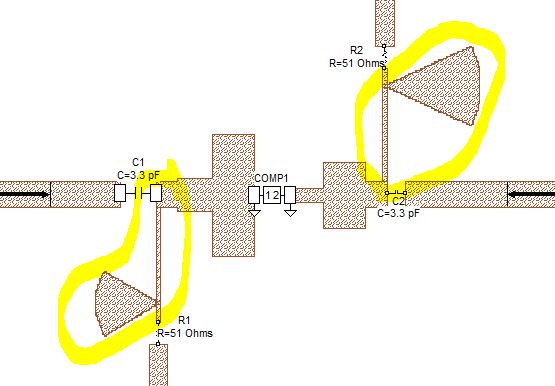f_t
Member level 4
Friends,
Could you please tell me in what situation I should use which kind of inductors? I mean as you see in the photo, the first one is a conventional inductor, the second one is a Mline, and the third one is spiral (My circuit is not a Ic and is a discrete circuit).
To supply drain of a power amplifier (which passes high current) I should use a conventional inductor or a RF choke or Mline (2.3 Ghz working frequency)?
What about in a matching or filter network which work at 2.3 GHz?
when should I use a spiral one? I think when there is no high current which wants to pass through the inductor, but what about its frequency? low or high?
Thanks

Could you please tell me in what situation I should use which kind of inductors? I mean as you see in the photo, the first one is a conventional inductor, the second one is a Mline, and the third one is spiral (My circuit is not a Ic and is a discrete circuit).
To supply drain of a power amplifier (which passes high current) I should use a conventional inductor or a RF choke or Mline (2.3 Ghz working frequency)?
What about in a matching or filter network which work at 2.3 GHz?
when should I use a spiral one? I think when there is no high current which wants to pass through the inductor, but what about its frequency? low or high?
Thanks

